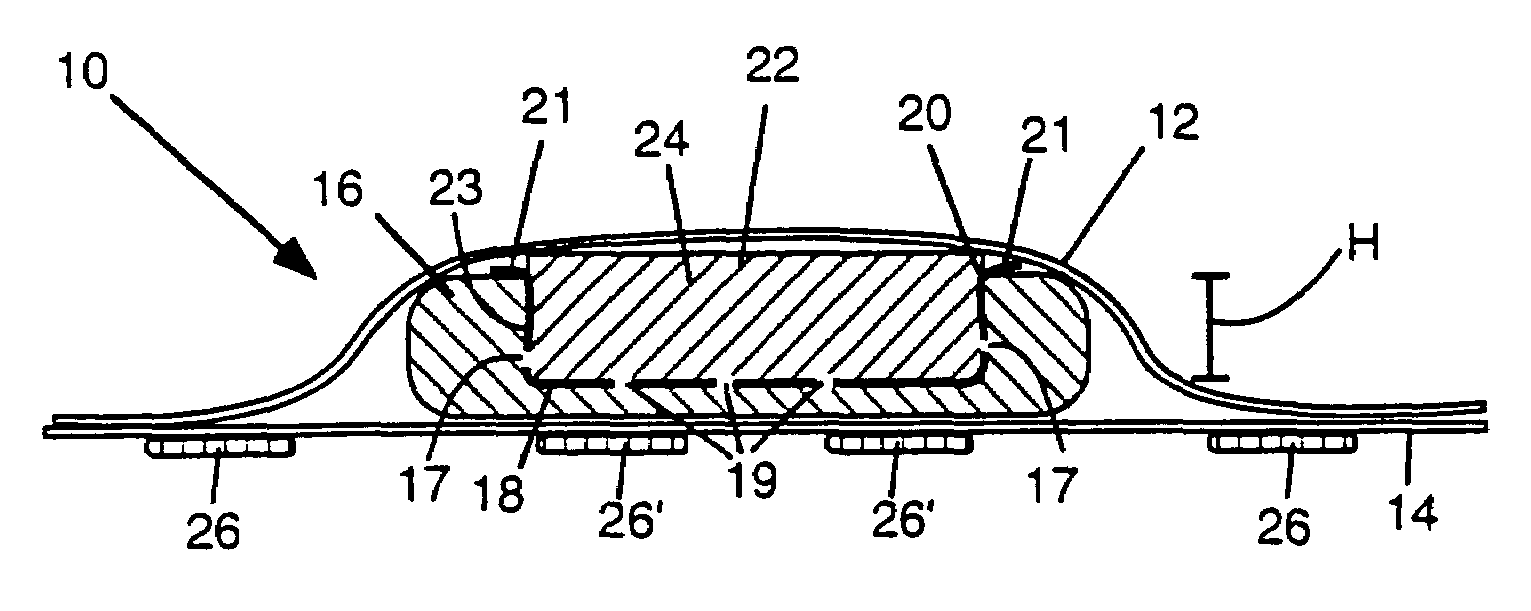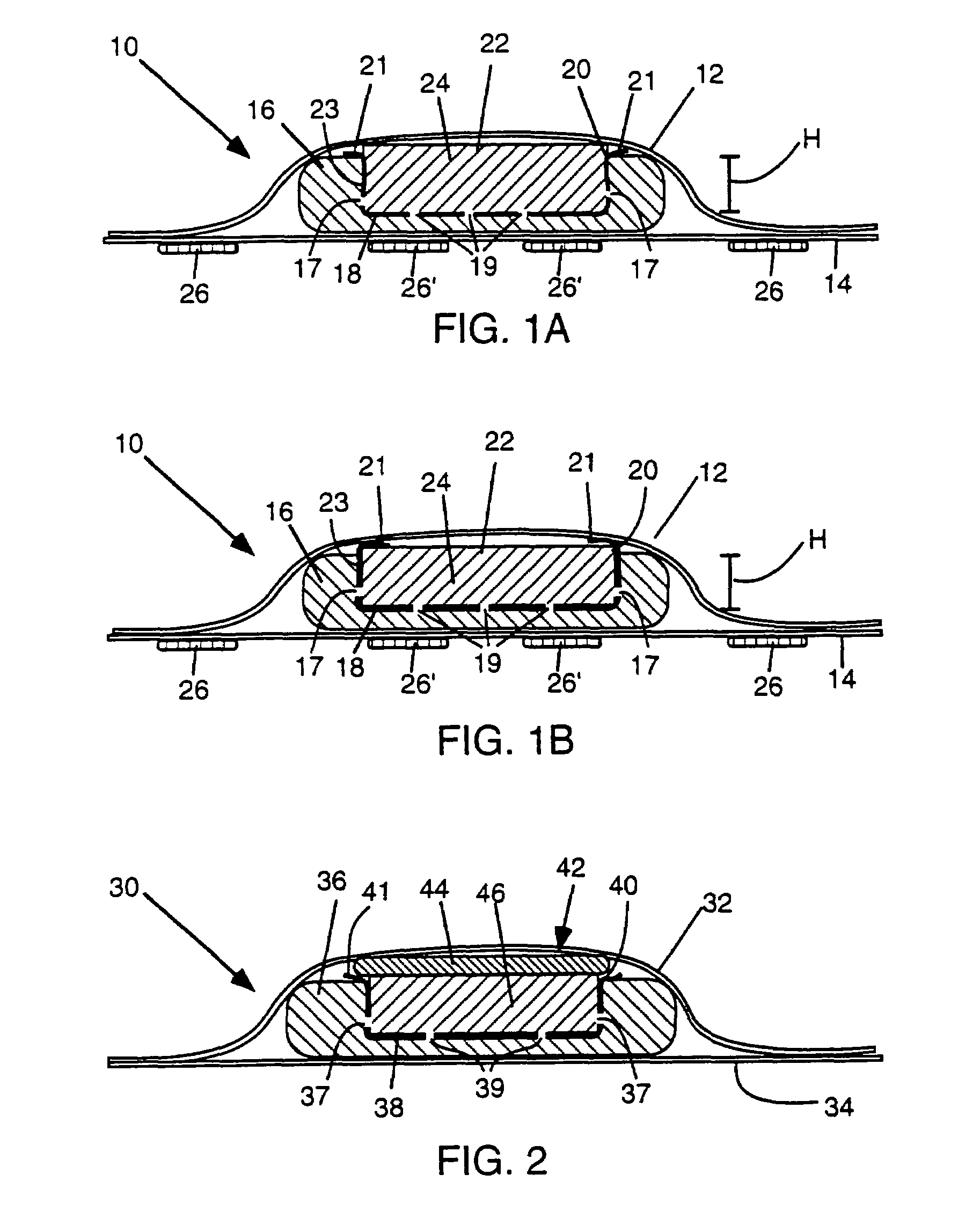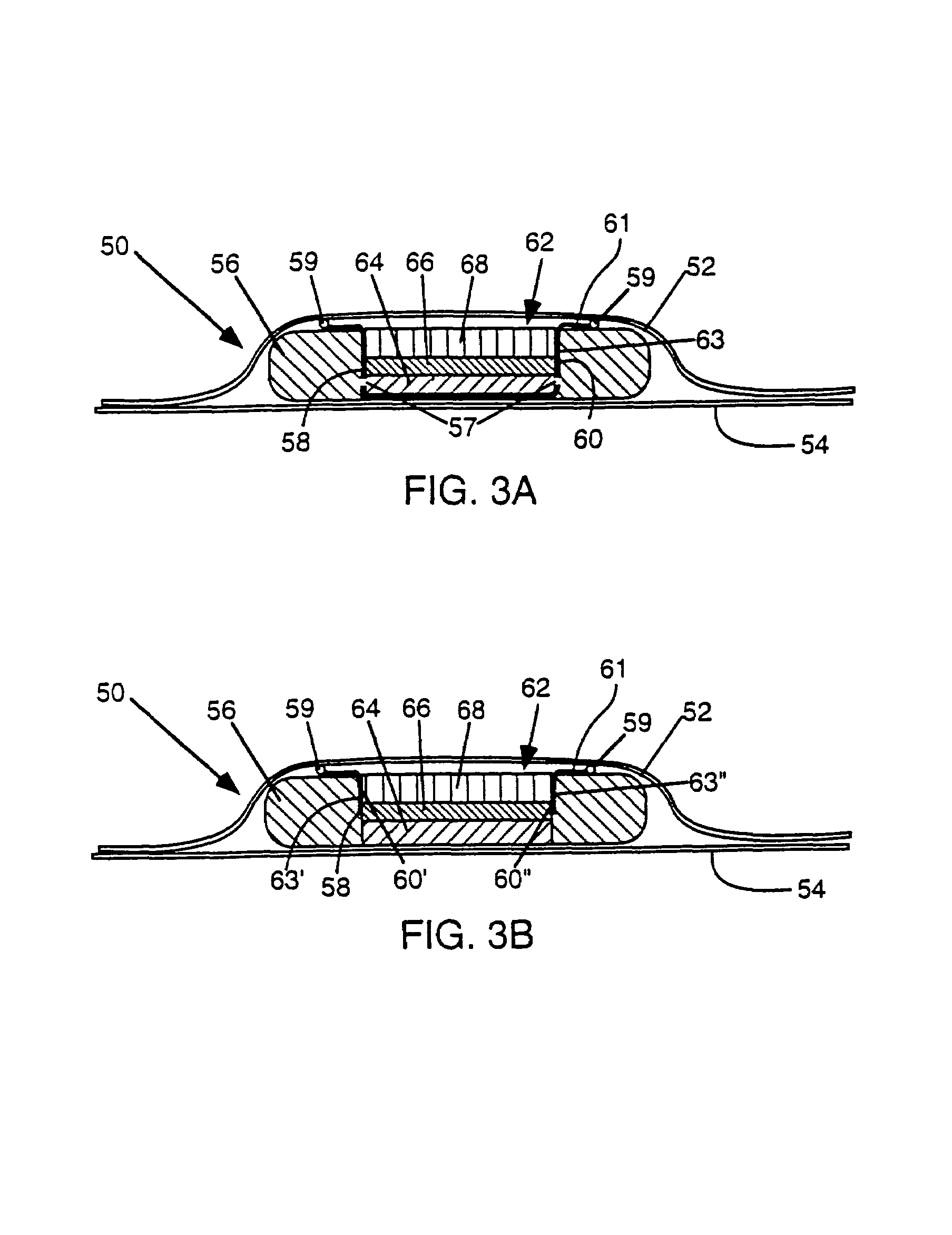Absorbent article with center fill performance
a technology of absorbent articles and filling strips, applied in the field of absorbent articles with center filling performance, can solve the problems of affecting the absorption of fluid, and not preventing fluid from reaching, so as to reduce the likelihood of conta
- Summary
- Abstract
- Description
- Claims
- Application Information
AI Technical Summary
Benefits of technology
Problems solved by technology
Method used
Image
Examples
examples
[0280]Several examples of absorbent articles were made with the materials listed in Table 1 below:
[0281]
TABLE 1Basic materials used in construction of absorbent articles for the Examples.ComponentManufacturerDescriptionTopsheetSpunbond materialKimberly-Clark Corp.0.6 osy polypropylene spunbond web, “Delta”version, treated with 0.3% add-on ofsurfactant (described below)Surfactant treatmentICI Americas, Inc.45% (w) polyethoxlated hydrogenatedethoxylated castor oil; 55% (w) sorbitanmonooleateAdhesiveNational Starch andNS-34-5610: slot-coated, pinstripe pattern,Chemical Co.applied at a level of about 5 gsm or less.FluffKimberly-Clark Corp.Coosa River CR56 debonded softwood pulpcomminuted with a hammermillDensified airlaid websCompleted webConcert Fabrication,90% softwood fibers and 10% binder fibersLteewith overall densities of 0.1-0.2 g / cc.FibersWeyerhaeuser Co.NB-416: bleached southern softwood kraftBinder fibersHoechst CelaneseCeibond #255: PET core, activated co-Corp. (Trevirapolyet...
examples 1-7
[0282]Example 1 and other examples described herein were made to have a top view appearance according to FIG. 21. FIG. 21 depicts a central absorbent member 462 surrounded by a hydrophobic ledge 470 and a larger absorbent member 466, which may be an outer absorbent member having a central void or depression or an underlying absorbent member without a central void or depression. The absorbent core comprising the central absorbent member 462 and the outer or underlying absorbent member 466 are enclosed by an underlying backsheet 468, with larger dimensions than the absorbent core to form a rim therearound, and a topsheet (not shown) which is attached to the backsheet 468 at the rim. Optionally, the central absorbent member 462 can be provided with embossed lines as shown in FIG. 21 comprising three long lines 472 and four short lines 474 each about 2 mm wide and approximately 0.4 mm deep.
[0283]Example 1 was a control pad made without a vertical wicking barrier but with a horizontal wi...
examples 8-10
[0297]Examples 8 to 10 were made according to Examples 3 to 5, respectively, except that the central absorbent member was inverted in each case. Thus, in Example 8, the upper layer of the central absorbent member was the cut-out portion of the 175-gsm densified airlaid web, while the lower two layers were the uncreped through-dried tissue layers, with the airlaid strip still isolated from the outer absorbent member by the vertical wicking barrier with its vertical component (the vertical wall between the members) and its horizontal component (the ledge resting on a portion of the body-side surface of the outer absorbent member). In Example 9, three layers of uncreped tissue were below the airlaid web in the central absorbent member. In Example 10, the central strip of densified airlaid web rested above a section of 200-gsm fluff pulp.
PUM
 Login to View More
Login to View More Abstract
Description
Claims
Application Information
 Login to View More
Login to View More - R&D
- Intellectual Property
- Life Sciences
- Materials
- Tech Scout
- Unparalleled Data Quality
- Higher Quality Content
- 60% Fewer Hallucinations
Browse by: Latest US Patents, China's latest patents, Technical Efficacy Thesaurus, Application Domain, Technology Topic, Popular Technical Reports.
© 2025 PatSnap. All rights reserved.Legal|Privacy policy|Modern Slavery Act Transparency Statement|Sitemap|About US| Contact US: help@patsnap.com



